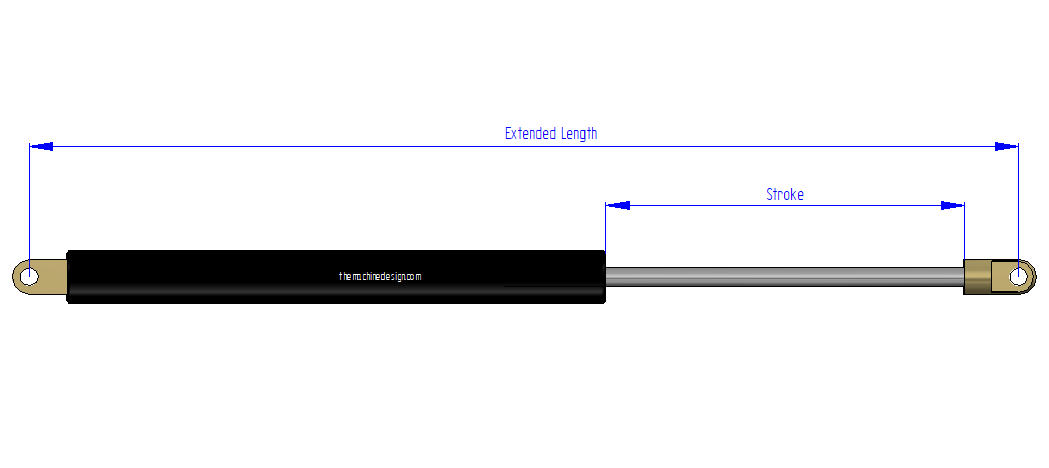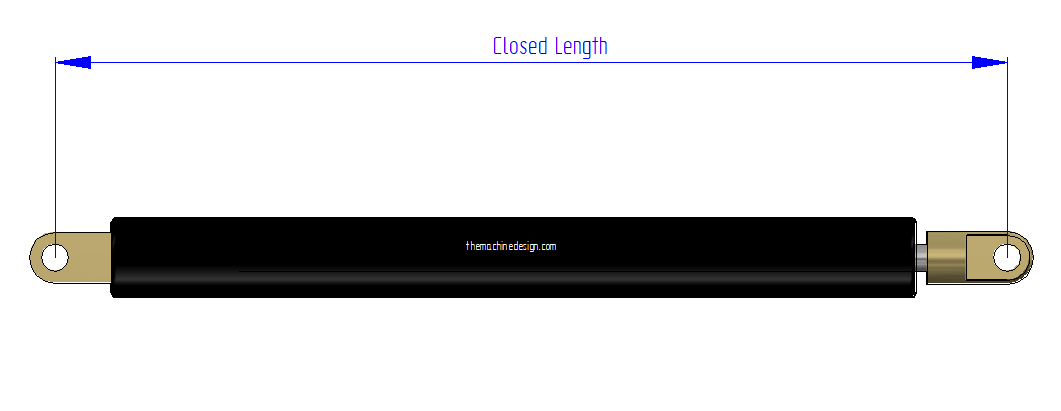Page Contents
What is a Gas Spring?
Hey, do you lift your car’s trunk door? It is so easy in opening and close. Right? Did you think ever why is it too easy to operate? You have seen their two in a pair or sometimes single lifting devices. In this article, we will read What is a gas spring? How does a gas spring work? So, Let’s begin with answers.
These lifting devices are known as gas springs. The principle of a Gas spring is similar to a mechanical coil spring. A mechanical spring stores energy and releases subsequently. Similarly, the filled gas of spring also stores and releases energy. A gas spring can be defined as a hydro-pneumatic device, in which Nitrogen gas is contained with oil to provide the compressible and damping medium. Major parts of gas spring are piston, piston rod, pressure cylinder, and clamping elements. A gas strut is also a phrase of gas spring.
How does Gas Spring work?
While applying force to the piston rod, did you think that How gas spring works? What is the principle of Gas Spring? According to Boyl’s law, the volume of internal gas decreases resulting in a proportional increase in pressure. The inner gas is compressed by applying force on the piston, gas stores energy, and oil provides smooth flow with damping. While we stop force application to piston road, compressed gas expands and move back the piston again. This compressed gas acts like spring. During the expansion of compressed gas, we can hear that expansion sound. The output force of spring is the pressure difference between atmospheric pressure outside of the cylinder and inner gas pressure. The resultant force is calculated by multiplication of pressure generated by gas and area of piston face. i.e,
Force, F = P x A
Also Read:
- Different Types of Toggle Latches and Their Uses
- Sustainable Office Furniture: Creating an Eco-Friendly Workplace
- What are Hydraulic Turbines?
What are the basic Terminologies:
Stroke: Maximum extendable length of the rod, is known as stroke.
Extended length: The total distance between one end to another end while spring is in the extended position.

Closed length: The total distance between one end to another end while the spring is in a closed position. When no ends are fitted with spring, the length will be measured from rod end to tube end excluding threaded length.

Usage and Applications:
Gas springs are used where requires controlled motion without adding extra force. It allows easy handling of heavy objects. It offers harmonic and controlled motion while moving objects. Due to various advantages, gas springs are used in automobile, automation, aerospace, marine applications, pharmaceuticals, furniture applications, office chairs, household and medical and industrial applications. As we can say, the list of applications is so long.
What are the Types of Gas Spring:
Have you any idea, what types of gas springs are? Let we will discuss types of gas struts. There are various types of gas springs according to application and requirements. Like Standard gas spring, adjustable locking gas spring, gas spring dampers, tension, and traction gas spring, custom or special gas spring, stainless steel gas spring, variable-speed gas spring, etc. Let us talk about some types of springs.
Standard gas spring –
Simple gas springs are reliable and easy to use. This type of spring is vastly used in the car’s hatch door, Adjustable chairs, Lids, top openers, etc. This spring has a closed container filled with pressurized nitrogen gas, which develops expansion force to the piston and displaces the rod.
Adjustable locking gas spring –
This type of gas spring is used, where locking at a certain extension is required. Like Hospital beds, adjustable office chairs, stools, executive chairs, etc. having locking springs. Standard gas spring has a locking plunger, which locks the piston rod movement. This type of springs are used in the hospital bed, adjustable car and passenger seats, emergency casualty trolleys, etc. The locking gas springs have two types i.e, rigid locking gas spring and cushioned locking. In cushioned springs, the rod has a slight travelling tendency while increasing load. This type of spring is used widely, the reason is behind these springs are easy in manufacturing. And rigid locking gas spring once locked, the rod does not move or travels even load added or removed.
Variable gas spring –
Where variable travelling motion mostly in pushing, requires this type of springs used. Mostly we can see this type of spring on doors. Variable gas springs have a dual cylinder connected using a connector with a hydraulic valve. One cylinder is pneumatic and another one hydraulic. Hydraulic cylinder creates damping during pushing motion.
Custom gas spring –
This type of gas spring is designed for variable applications. Like special machinery, robotic applications, medical applications, aerospace, military applications, etc.
What are the Basic Components:
The main components of gas springs are Cylinder, A piston, piston rod, seal, valve, and guide. Nitrogen gas filled in the cylinder.
In this article, we have studied How a gas spring work? And their types, working principles, and, various uses and applications of gas springs. We will discuss the mounting and gas spring calculation in our next article, so stay tuned. If you have any queries regarding this article, please comment in the comment box. This article is helpful for you? Please do like and share it. And visit us regularly for reading more new interesting articles. Thank you for your support.



This working mechanism of principle types application is amazing to read. Thanks for the valuable information on this topic. Subscribed your blog.